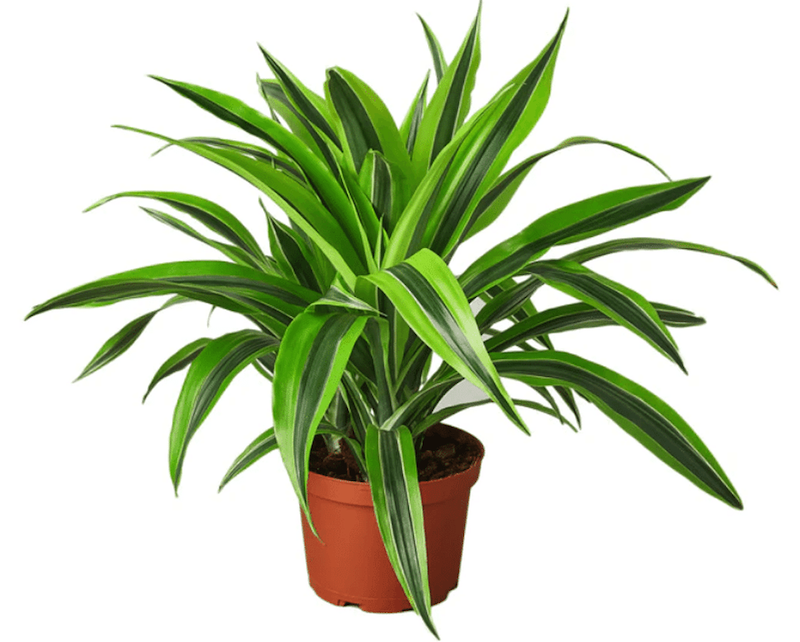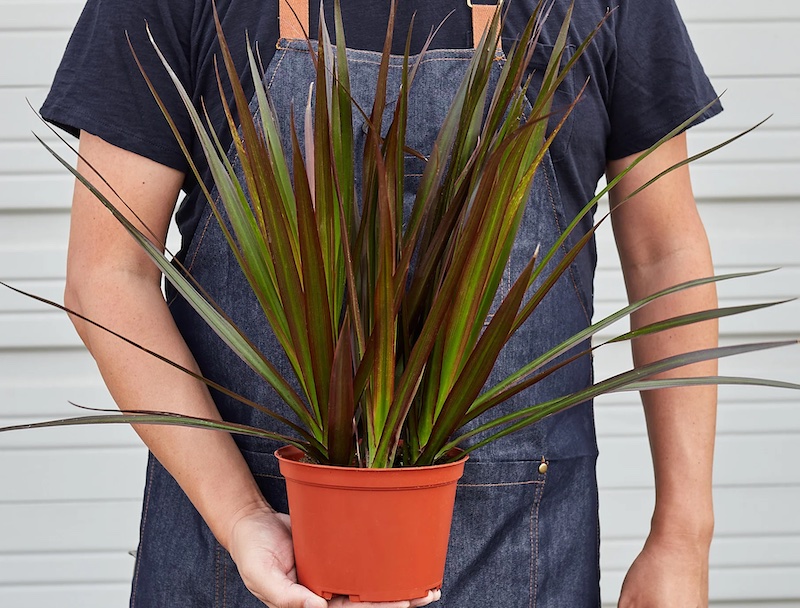Growing Dracaena
Dracaena is a leafy, tropical houseplant that is available in many forms. This plant hails from the warm climates of Asia, Africa, and Australia. The broad foliage often has varying shades of green, while some cultivars feature red pinstriping and other subtle variegation. The long, narrow foliage comes to a pointed tip and typically grows in a rosette formation. Some varieties are bushy, while others feature a tree-like structure. Taking care of Dracaena is simple, making this houseplant well suited to inexperienced or forgetful plant owners and anyone looking to introduce a tropical feel into their space.

Dracaena Sunlight Requirements
Place Dracaena houseplants in bright indirect sunlight. This hardy plant can handle direct sunlight, but only in limited quantities. A south- or east-facing window is a good place for this leafy beauty. Rotate the plant periodically to ensure all sides receive light and to prevent the plant from leaning toward the light source.
Planting Dracaena
Dracaena is not picky about potting soil but prefers slightly acidic soil. Drainage is essential because this plant does not like wet feet. Dracaena is a slow-growing plant that can be repotted infrequently. Plan to repot Dracaena every few years at most. Dracaena do not mind being root-bound, but growth will slow further when the roots don’t have room to spread. Upgrade to a pot one to two inches larger in diameter when repotting to keep the plant happy and growing.

Watering Dracaena
Keep the soil consistently damp when Dracaena plants are actively growing in the spring and summer. Drench the soil and allow excess water to drain through the pot. You can tell Dracaena plants need water by feeling the soil. When the top couple inches of soil are dry, it is time to water the plant. Dormant plants should be allowed to dry out between watering sessions and may need water only every other week. This houseplant appreciates consistently warm temperatures, so avoid placing Dracaena near exterior doors, windows, or vents. Average to high humidity is ideal.
Fertilizing Dracaena
Fertilizing is vital for houseplants, especially plants like Dracaena that do not require repotting often. Feed Dracaena when the plant is actively growing to support continued growth. Monthly applications of fertilizer are best. Fertilize Dracaena using a balanced food formulated for houseplants. A water-soluble fertilizer can be mixed with water and applied during routine watering.
Common Dracaena Problems
Dracaena that is overwatered or growing in areas with high humidity may form fungal leaf spots. Remove any foliage that shows signs of fungus, and consider increasing the amount of light the plant receives and decreasing water or humidity. Water containing minerals or fluoride may cause brown spots on the foliage. Remove leaves with browning and use filtered water or let tap water sit out for 24 hours, so compounds in the water dissipate before watering the plant.
Propagating Dracaena
Propagate Dracaena through stem cuttings. Spring is the best time to take a cutting because this is when the plant is prepared to grow actively. Using clean shears, remove a section of the stem, peel away the lower leaves, and place the cutting in water or moist soil. Cuttings need bright indirect light to form roots, which typically develop in a few weeks. Cuttings propagated in water can be transplanted into soil when the roots are at least one inch long.

Growing Dracaena Outdoors
Dracaena houseplants can be moved outdoors during the warmer months. Feature potted Dracaena plants on a porch or patio space to add leafy greenery. Wait until the outdoor temperature is consistently above 55 degrees before bringing Dracaena plants outside. Get the plant back inside in late summer or early fall before the temperature turns cold. Place Dracaena in indirect sunlight and water when the top couple inches of soil are dry. Use a container with drainage, so rain will not create soggy conditions.
 |
Author Alison Cotsonas - Published 3-06-2023 |
